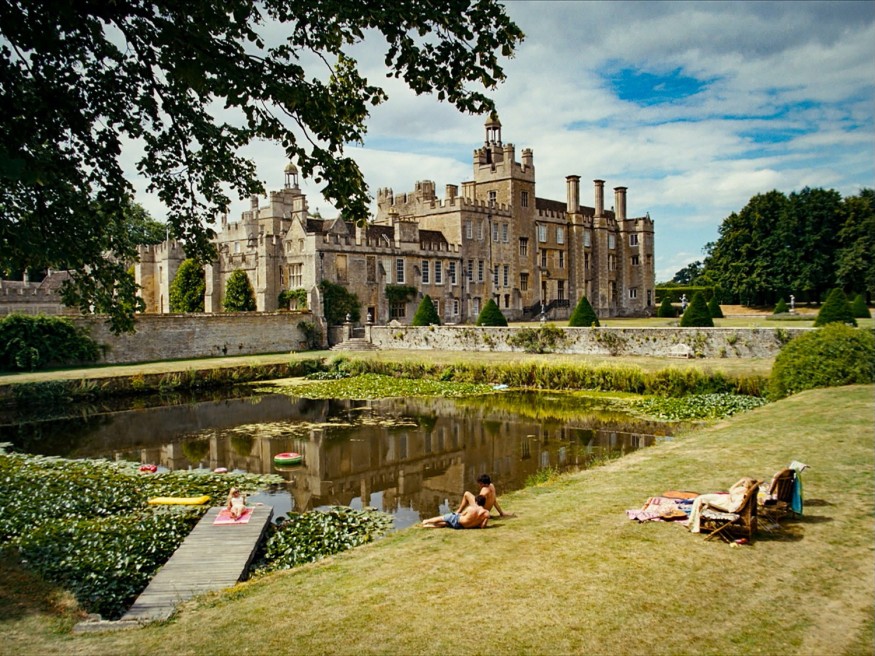Cinematic Allure of Architectural Grandeur in ‘House Porn’ Films

In the age of social media, where hashtags can lead us down unexpected visual rabbit holes, the term "house porn" has emerged, steering us away from explicit content to the opulent interiors and stunning exteriors of architectural marvels showcased in films. A recent example of this trend is the film "Saltburn," directed by Emerald Fennell, where the mansion itself, Drayton House in Northamptonshire, takes center stage amidst the controversy surrounding its nudity and unconventional sex scenes.
What makes these films provocative is not the explicit content but the seductive lens through which they capture architectural wonders. In "Saltburn," the camera meticulously explores the lavish interiors and picturesque facade of Drayton House, elevating the house to the status of an object of desire for the protagonist, a character consumed by social resentment.
This trend is not unique to "Saltburn." Throughout cinematic history, there have been instances where the allure of architectural splendor outshines the eroticism of the plot. Here are some notable examples:
1. L'inhumaine (1924), by Marcel L'Herbier: This silent film, a masterpiece of art deco, features stunning cubist designs by architect Robert Mallet-Stevens, becoming a visual feast for audiences in 1924.
2. The Rules of the Game (1939), by Jean Renoir: A corrosive portrayal of the high bourgeoisie, this French classic uses opulent settings, including a luxurious apartment and a château, to reflect the decadence of its characters.
3. Mon Oncle (1958), by Jacques Tati: Set in a futuristic house, this film uses modern architecture and design for hilarious visual gags, contrasting it with the old buildings of Paris.
4. Cries and Whispers (1972) and Fanny and Alexander (1982), by Ingmar Bergman: Bergman uses the red walls of a house in "Cries and Whispers" symbolically, while "Fanny and Alexander" contrasts warm bourgeois interiors with the austerity of another house.
5. Interiors (1978), by Woody Allen: Allen's film uses interior design as both a metaphor for the characters' psyches and a self-referential nod to filmmaking, marking the peak of his interest in interior aesthetics.
6. 9 ½ Weeks (1986), by Adrian Lyne: This famous erotic drama stands out for its Manhattan penthouse setting, reflecting the yuppie aesthetic of the 1980s.
7. Howards End (1992) and The Remains of the Day (1993), by James Ivory: Both films, based on literary works, showcase sumptuous British settings, emphasizing the role of period cinema and high-quality production.
8. I Am Love (2009) and Call Me by Your Name (2017), by Luca Guadagnino: Guadagnino's films, mainly "I Am Love" and "Call Me by Your Name," exhibit a profound appreciation for interior design, often overshadowing the supposed passions at the core of the stories.
9. The Handmaiden (2016), by Park Chan-wook: This thriller set in a palatial residence combines carnal lewdness with decorative grandeur, showcasing a house designed by influential British architect Josiah Conder.
In every one of these movies, the architecture takes on a life of its own, affecting the story, establishing the mood, and revealing the characters' innermost thoughts. These movies honor the artistry of architecture, showcasing everything from historical palaces to avant-garde designs, and they encourage viewers to enjoy a different kind of visual delight: the allure of places on the screen.
Related Article : Must-Visit Art and Architecture Shows in 2024
From Digital Models to 3D-Printed Homes: Jaspreet Kaur Lall Explains How the Innovation Changes the Construction Industry

Future Belongs to Green Construction: Sampath Kumar Paspunoori Explains One of the Key Trends in the Construction Industry

Kamala Harris' Campaign Ad Uses Iconic Visuals from Carrie Mae Weems to Connect with Voters

Historic Ancient Roman Ruins in Baalbek Remain Strong After Israeli Air Strikes; Locals Seek Cultural Protection

4 Ways to Honor Departed Loved Ones in Your Home Design














